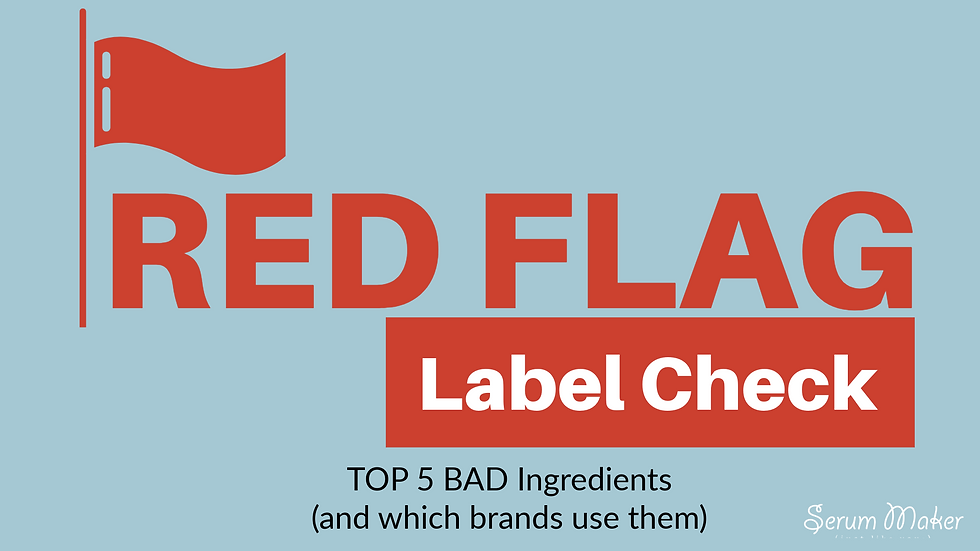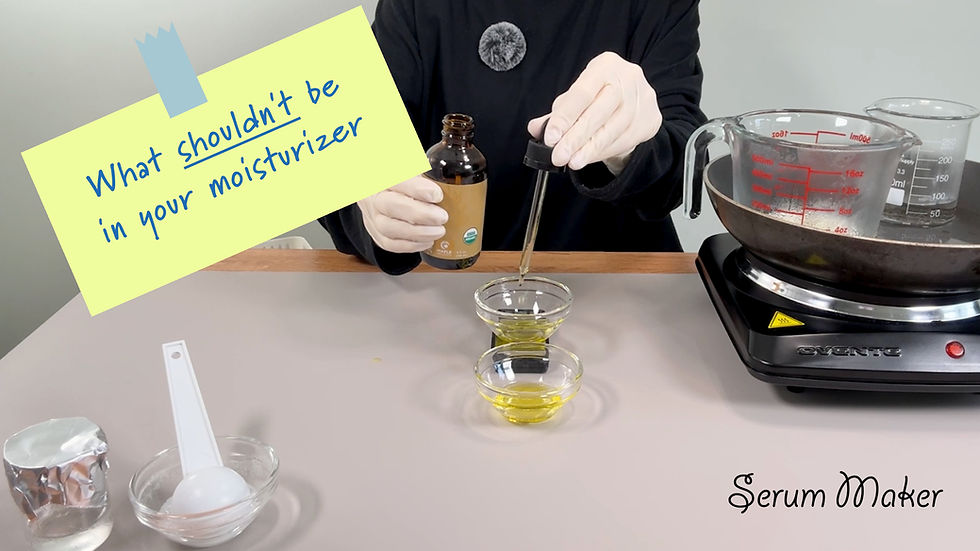What’s BHT, and why did the EU give it the boot?
- Serum Maker
- Jul 3
- 2 min read
Updated: Aug 27

“These preservatives are banned in the European Union… with an increased cancer risk.” —Dr. Neha Pathak nypost.com
Think of BHT as the little engine oil in your serum that’s supposed to protect your formula from going rancid. But beneath that protective sheen lies a murky engine room of hidden risks. BHT raises red flags, and it’s fair to question whether we should be putting it in and on our body, especially since EU has banned it from most skincare products.
BHT, or butylated hydroxytoluene, is a synthetic antioxidant added to cosmetic and food products to prevent oxidation. However, EU regulators have placed restrictions, (and in some products effectively banned it) due to emerging concerns around its hormone-disrupting potential and toxicity risks.
Why are we still slapping BHT into skincare?
BHT is oil-soluble and stabilizes formulas like lip balms, sunscreens, and serums against “going bad,” according to ECHA (European Chemicals Agency). In the US, it’s a go-to for extending shelf life.
The Cosmetic Ingredient Review (US) deems it safe up to 0.5%.
The EU restricts it to ≤0.8% in leave-on formulas - and just 0.001% in mouthwash because of increased risk.
So… what’s the big stink?
High-dose BHT in animal studies has caused liver, kidney, lung tumors, and even endocrine disruption. The EWG warns of hormone interference, tumor promotion, and organ toxicity.
“There is potential risk to human health… when concentrations exceed certain levels.” —EU SCCS
BHT is hiding in a lot of products
BHT turns up in lipsticks, moisturizers, sunscreens, serums, and processed foods like cereals and snacks Reddit users flag it in many US cosmetics, while EU bans it in foods altogether. So, it’s everywhere in mainstream ingredients lists, and consumers are becoming more aware.
Tip: Make ingredient labels your BFF. If it ends in “–tol” or looks science-y (E321), dig deeper.
Should you run from BHT?
While, here in the US, it’s legal and deemed safe at <0.5%, that doesn’t equal healthy. Low‐level exposure may subtly disrupt hormones or accumulate over time.
What you can do about it.
Make your own skincare products. You control the preservatives you use and the amount that goes in your stuff. The key is knowing – and with commercial products, we don’t know the percentages to their formulas. I go into detail about The 1% Rule in The Serum Maker Essentials Course.
If you’re interested in learning how to make quality skincare at home – I can teach you step-by-step. Take a course! You’ll learn a ton, get some great custom recipes (using ACTIVE INGREDIENTS) and have fun along the way – oh and the best part – you’ll save so much money when you stop paying retail prices.

Want to know the Top 5 Ingredients that made the Red Flag Ingredients List? (And the NAME BRANDS that include them?)





Comments